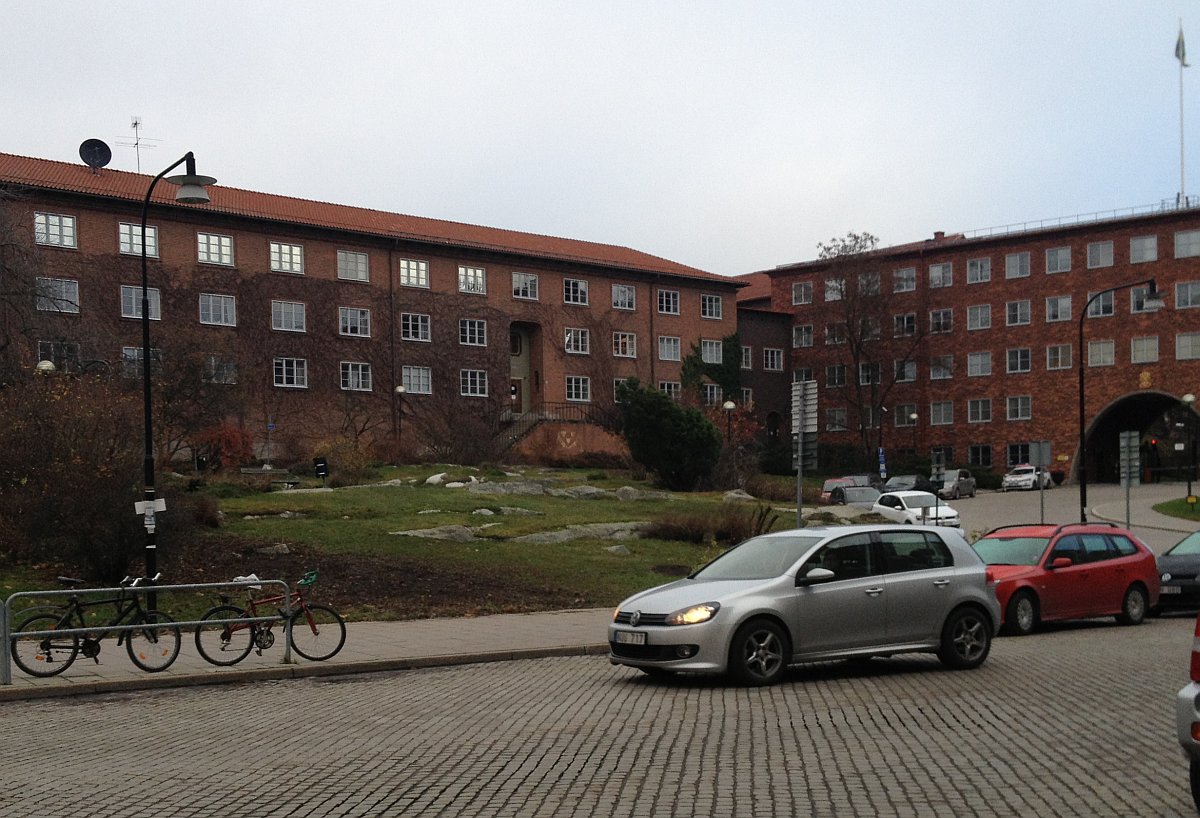Monthly Archives: November 2013
Report on tactical trials with strv 81
Original title: Rapport över fortsatta taktiska försök med strv 81 9/8 – 14/8 1954
A report authored by the headquarters of the VI. Military Area (VI. militärområdet) dated 1954-09-13, describing the result of tactical trials done in the far north of Sweden, near Kalix, in mid-august 1954. The report concludes that despite the difficult terrain the tanks were quite able to maneuver and fight, and recommends attaching an armored brigade to the 2nd Army Corps (2. armékåren).
Archive reference: SE/KrA/0266/002/01:H/F I/2
Report regarding trials of napalm effects against tanks
A report dated 1954-01-16 regarding trials with napalm against tanks, conducted in November and December of 1952. The report covers a number of practical tests done, some with rabbits placed inside the tank, and concludes that while napalm is mostly harmless against tanks (provided that the air intakes are undamaged and that there are no oil or fuel leaks), the psychological effect is probably significant. The report also contains a draft of a brief crew instruction sheet on what to do in case of napalm.
Archive reference: SE/KrA/0266/002/01:H/F I/1
Report on how tanks and tank crews are affected by nuclear weapons
A report (dated 1954-01-12) from FOA 2 regarding what nukes do to tanks and tank crews. FOA 2 was the second division of the defense research agency, responsible for general physics research. The report is mainly theoretical in nature but there are some experimental verifications of the result as well.
Archive reference: SE/KrA/0266/002/01:H/F I/1
Meetings at Bofors in late 1954 regarding status of current projects
Minutes from two meetings at Bofors (on 1954-09-22 and 1954-12-08) discussing the status of various projects. More specifically:
- Kv 155 (SPG; later became akv 151, even later bkan 1)
- Project 6400 (heavy tank, aka. KRV)
- FH 105 X (105 mm towed field howitzer)
- Obusier de 155 mm Modèle 50 (popularly called “Haubits F” or “Fransyskan”; a towed French howitzer license produced by Bofors)
- FAK 120 X 53 (a towed 120 mm automatic AA gun; considered by the meeting attendants to be of doubtful value)
- Lvkv fm/49 (a SPAAG)
- “Light brigade AAA”; unspecified 20 or 30 mm towed AA gun
- 75 mm L/60 gun for strv 74
- “Gjallarhorn”, speculative man-portable light anti-tank weapon
Archive reference: SE/KrA/0266/002/01:H/F I/1
Orientation regarding current projects (may 1954)
Minutes from a meeting (1954-05-04) at the arms administration’s vehicle bureau regarding the status of current projects. Mentions the “tankette” (project 6400 aka. the KRV), kv 155 (a SPG prototype that would eventually become akv 151 and then eventually bkan 1), lvkv fm/49 (a SPAAG) and the upgunning of strv m/42.
Archive reference: SE/KrA/0266/002/01:H/F I/1
Meeting minutes re: upgunning strv m/42
Minutes from a meeting at Landsverk 1952-02-15 where different turret options for strv m/42 were discussed.
Archive reference: SE/KrA/0266/002/01:H/F I/1
Pictures from the archive
A few pictures to give you an idea of what the archive actually looks like.
Alternatives for upgunning strv m/42
Memo dated 1954-02-17 regarding options for upgunning strv m/42. Mentions both an oscillating turret and rebuilding as a tank destroyer.
Archive reference: SE/KrA/0266/002/01:H/F I/1
Various 1954 meeting notes regarding Bofors project 6400
Meeting notes from three different meetings between KATF and Bofors at various points during 1954, regarding “project 6400” (a heavy tank).
Archive reference: SE/KrA/0266/002/01:H/F I/1
Conclusions from evaluating the AMX-13
A letter to the French military attaché in Stockholm, dated 1954-10-22, summarizing the conclusions from the Swedish evaluation of the AMX-13.
Summarizing the summary, the tank is found to have:
- surprisingly good firepower considering its small size
- excellent mobility (with some modifications, the mobility is good even in severe winter conditions)
- good reliability and ease of maintenance
- low specific fuel consumption (i.e. good mpg)
- bad crew comfort; the interior is found to be highly cramped
- severely lacking armor protection, although the mobility and small size compensates for this to some degree
The evaluation further suggests that the small size would be even more advantageous if the gun depression was increased 3-4 degrees and that a zoom function for the tank commander’s optics would be desirable. It also criticizes the design choice to have the engine’s cooling air pass below the fighting compartment, on the grounds that this seems dangerous if the tank is exposed to napalm or radioactively contaminated dust.
Archive reference: SE/KrA/0266/002/01:H/F I/1

